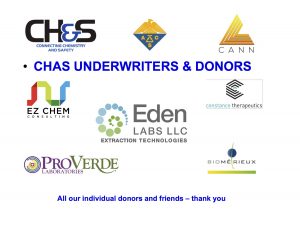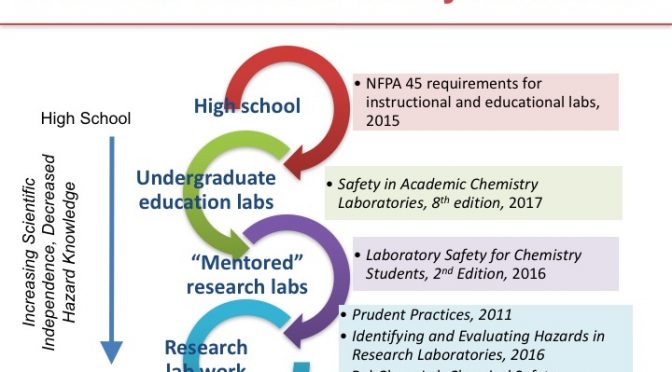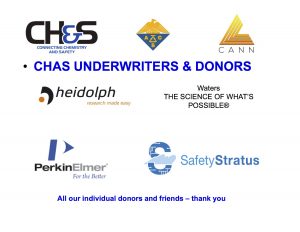At the Spring, 2017 ACS national meeting, CHAS members Ralph Stuart and Sammye Sigmann made presentations in the Division of Chemical Education technical program on topics related to undergraduate research safety. Sammye’s presentation was entitled:
Integrating Hazard Identification and Risk Assessment into Course-based Undergraduate Research (CURE)
Ralph’s (which Sammye co-authored) was entitled:
Providing laboratory safety education to REU audiences.
In addition, they co-authored a poster for Sci Mix. An overview of the poster and a link to it are provided below.
In 2016, the ACS Division of Chemical Education (CHED) updated their “Safety Guidelines for Chemical Demonstrations”. The Guidelines are available at the CHED web site. Look at DCHAS web site to see how these guidelines align with the “5 Key Questions”.
This poster provides a quick overview of the five key safety questions that anyone planning chemical demonstrations or experiments should ask and answer prior to work. It is also important to be aware that local jurisdictions may require more extensive planning for some demonstrations and so for everyone’s safety – check with the local Fire Department for help with planning your demonstration.
The Five Key Questions are:
- What specific chemical or physical reactivity hazards are associated with the way I’m using these chemicals?
- What type of ventilation do I need?
- What personal protective equipment do I need?
- What emergency response protocols will be needed if something goes wrong?
- What will I do with the waste?
Sigmann, S.; Stuart, R.
Assessing Risk: Five Key Questions for Safe Research and Demos. inChemistry Magazine, 2016, September/October, 6-9.
Five Chem Safety Questions poster




